White and Yellow Butterflies
Whether in butterfly gardens or appreciated in nature, butterflies are arguably the gardener’s favorite insect. Florida is home to many butterflies, including several yellow and white butterflies that can be seen at various times of year; some are even viewable year-round. Here is a sampling of white and yellow butterflies found in our state.
White
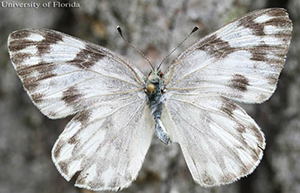
Adult female checkered white butterfly. Photograph by Donald W. Hall, University of Florida.
The larva of the checkered white (Pontia protodice) butterfly is called the southern cabbageworm and is a pest of plants in the Brassicaceae (cabbage) family. This butterfly is found throughout Florida from March to October. Adults have a wing-span of 1.25 to 2 inches. Male butterflies are white with dark gray markings on the front wings. Female butterflies are grayish-white with dark gray checkered markings on both the front and hind wings. It is most commonly found in disturbed areas where its host plants most often occur. Host plants include herbs in the Brassicaeae family and Virginia pepperweed.

Female zebra swallowtail. Charles T. and John R. Bryson, Bugwood.org

Adult cabbage white butterfly. Photo by James Castner, University of Florida.
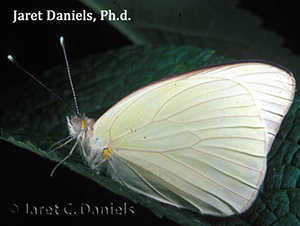
Male great southern white butterfly. Photo by Jaret Daniels, Ph.D. All rights reserved.
Yellow
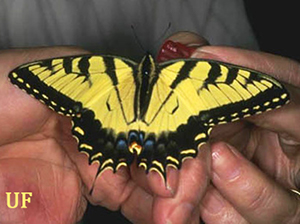
Yellow form of an adult tiger swallowtail, Papilio glaucus Linnaeus. Photo by Jerry F. Butler, University of Florida.
Male tiger swallowtail (Papilio glaucus) butterflies live up to their name; they are yellow with dark stripes in a pattern resembling that of a tiger. Females come in two forms; one looks like the males while the other is black with shadows of darker stripes. Both female forms have a row of blue chevrons on their hindwings. Adults are large, with a wing spread of 3.5 to 5.5 inches. Tiger swallowtail butterflies are found in the entirety of the state except the Keys. These butterflies are seen from February to November in areas including open woodlands, forest edges, roadsides, meadows, and pastures. Larval host plants are black cherry, ash, and sweetbay magnolia.

Dainty sulphur butterfly. Photo by Dr. Jaret Daniels, all rights reserved.
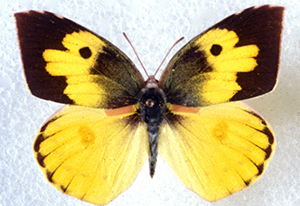
Southern dogface butterfly. Charles T. and John R. Bryson, Bugwood.org
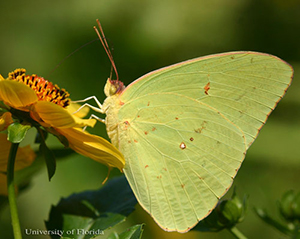
Adult male cloudless sulphur. Photo by Marc C. Minno, University of Florida.
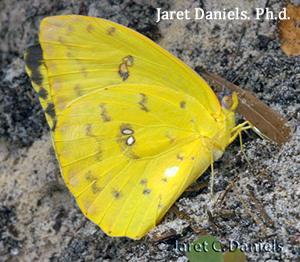
Female orange-barred sulphur. Photo by Dr. Jaret Daniels, all rights reserved.
Attracting Butterflies
For gardeners thinking of adding butterfly plants to their landscapes, it's important to note that both caterpillar host plants and nectar plants for adults should be planted to maximize butterfly populations. Learn more about planning your own butterfly garden here on Gardening Solutions. And you can always contact your county Extension office for help from agents familar with your community.
Also on Gardening Solutions










